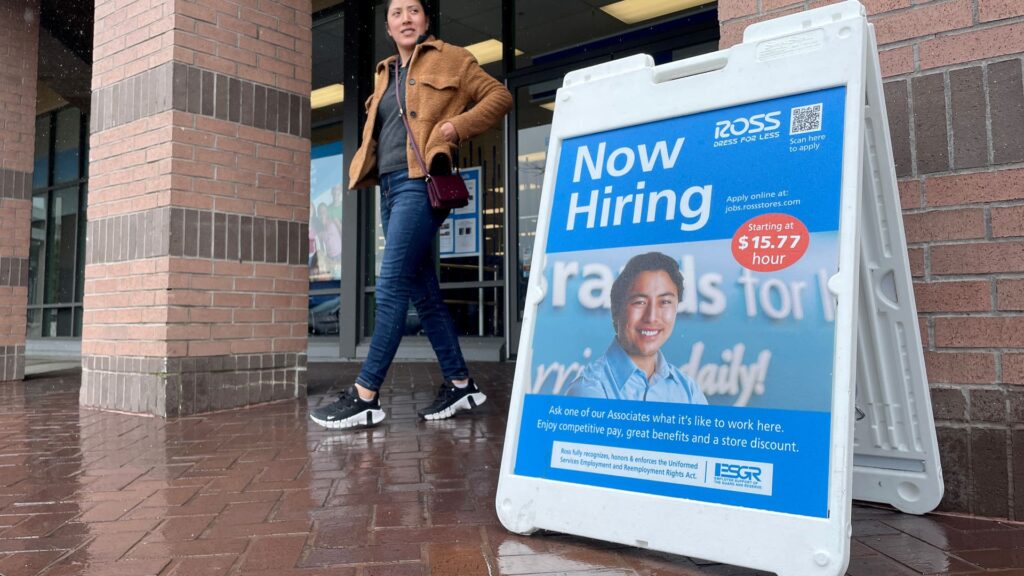
The U.S. economy created slightly fewer jobs than expected in August, reflecting a slowing labor market and clearing the way for the Federal Reserve to cut interest rates later this month.
Nonfarm payrolls rose by 142,000 this month, up from 89,000 in July but below the Dow Jones consensus forecast of 161,000, according to a report released Friday by the U.S. Department of Labor’s Bureau of Labor Statistics.
At the same time, the unemployment rate fell to 4.2% as expected.
Although the labor force participation rate remained at 62.7%, the labor force increased by 120,000 people this month, pushing the unemployment rate down 0.1 percentage point. Another measure, which includes discouraged workers and those working part-time for financial reasons, edged up to 7.9%, the highest reading since October 2021.
The household survey, used to calculate the unemployment rate, which tends to be more volatile than the business survey, showed employment rose by 168,000. However, part-time employment increased by 527,000, while full-time employment fell by 438,000.
Markets initially reacted little to the data, with index futures trading negative and Treasury yields also moving lower. However, shares sold off later in the session.
While August’s data was close to expectations, data for the previous two months saw significant downward revisions. The Bureau of Labor Statistics lowered July’s total by 25,000 to 118,000 in June, a downward revision of 61,000.
“I don’t really like this one. It’s not a disaster, but the results on the headlines were lower than expected and what really bothers me is the revision,” said Dan North, senior economist for North America at Allianz Trading. “It’s definitely going the wrong way. ”
From an industry perspective, construction led the way with 34,000 new jobs. Other areas that saw significant growth included health care (up 31,000) and social assistance (up 13,000). Manufacturing lost 24,000 jobs this month.
In terms of wages, average hourly wages increased by 0.4% from the previous quarter and 3.8% annually, both higher than expectations of 0.3% and 3.7%. Working hours rose slightly to 34.3 hours.
The report comes as markets are nervous about the next step for the Federal Reserve, which has held interest rates steady since July 2023 after implementing a series of sharp hikes to reduce inflation.
Before the news was released, the market had been believing that there was a 100% chance that the Federal Reserve would start cutting interest rates at its meeting on September 17-18. The only question is how much.
According to the CME Group’s FedWatch Indicator, futures markets were pricing in a half-percentage-point downward move following the release of the non-farm payrolls data, but later reversed course by a quarter-percentage point.
“For the Fed, this decision comes down to deciding which risk is greater: if a rate cut of 50 points would reignite inflationary pressures. [basis points] If they only cut 25%, they risk a recession [basis points]said Seema Shah, chief global strategist at Principal Asset Management.
Recent economic data suggests the labor market continues to grow but is slowing. Payroll firm ADP reported Thursday that the private sector added just 99,000 jobs in August, while outplacement firm Challenger, Gray & Christmas reported a surge in layoffs in August and hiring at a pace not seen so far this year since at least 2005 The slowest level.
The BLS report showed that the private sector added 118,000 jobs this month, up from 74,000 in July. Government jobs increased by 24,000.
Most Fed officials said they also expected rates to fall. In a key annual speech at the central bank’s annual secret meeting in Jackson Hole, Wyoming, Fed Chairman Jerome Powell declared that “the time has come” to adjust policy, but he did not provide specifics on what he meant.
New York Fed President John Williams supported a rate cut in a speech Friday morning.
“Given that the economy is currently in equilibrium with inflation approaching 2%, it is appropriate to make the policy stance less restrictive by lowering the target range for the federal funds rate,” Williams said in a speech before the meeting. New York Diplomacy Relations Committee.
